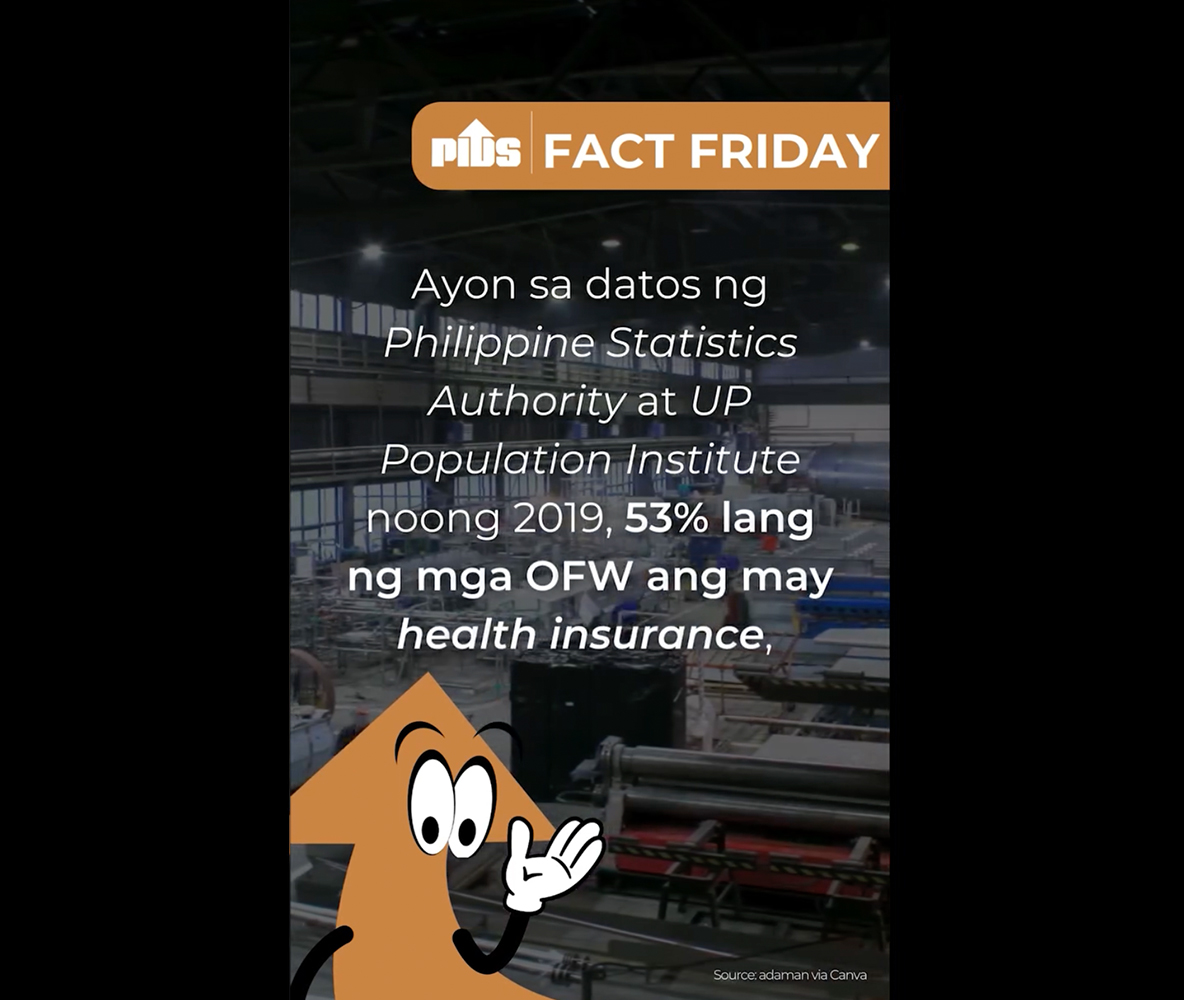“From 1987 to 2013, the penetration rate of the AIP has not been impressive. It has only achieved 4.5% for palay and 0.9% for corn, compared to 72-90% in the United States, 53% in Japan, 14% in India, and 10% in China,” according to the January 2017 policy note, “Is the Agricultural Insurance Program of the Philippines Serving the Poor?”
It only improved to an average of 10% in 1988-1993, but sank below 2% in 2000-2008, rising again to 10.2% in 2013 after beneficiaries of the agrarian reform received subsidized coverage.
“In the case of corn, this rate had never been above 2% from 1987 to 2012. In 2013, it was only 2.3%,” PIDS said.
According to PIDS, government agencies have become big AIP beneficiaries with the Northern Mindanao region claiming P1.62 million and the Department of Agriculture (DA) claiming P5.4 million in 2014.
“These instances raise question on the capacity of the AIP to prioritize the needs of the marginalized rice and corn farmers,” said PIDS.
It was also found that the program mostly covered farmers with large farms while some of the more marginalized rice farmers were paid low claims.
There had also been an insufficiency of agricultural insurance in some regions, especially in the Autonomous Region in Muslim Mindanao (ARMM) where there are “practically no insured farmers” in both palay and corn.
PIDS also showed that the AIP covers the self-financed farmers than it does the farmers who need to borrow money for their farms.
“For 2013-2014, self-financed farmers comprised more than 62% of the insured in all the regions except in Region IIIA2 where 71% of the insured were borrowing farmers,” according to the policy note.
Meanwhile, around 74% of insured palay farmers were self-financed while 26% were borrowing farmers.
Premiums paid by the farmers to enroll in the AIP may also be too high, PIDS said, as the premium subsidy for palay and corn hit an average of 61% of gross premiums from 1981 to 2014.
“One recommendation is to charge the farmers only the net premiums based on the historical claims experience of the AIP and the rest to be charged to subsidies from the government and lending institutions,” said PIDS.
The think tank also proposed that the government limit the amount paid by the farmers against a benchmark, such as a certain percentage of the minimum wage.
According to PIDS, there has been a reduction in the ratio of operating expenses to gross premiums from 2013 to 2015, but attributed this to large increases in premiums and not a reduction of operating expenses.
PIDS also proposed that the AIP set up actuarial reserves in order to increase the credibility and financial capability of the program.
It also recommended that the government prioritize the consideration of the marginalized subsistence farmers in its insurance coverage, product lines and premiums.
“AIP processes should be streamlined to enhance efficiency and to minimize program leakages,” PIDS said, adding that there must be a greater investment in a management information system.//
It only improved to an average of 10% in 1988-1993, but sank below 2% in 2000-2008, rising again to 10.2% in 2013 after beneficiaries of the agrarian reform received subsidized coverage.
“In the case of corn, this rate had never been above 2% from 1987 to 2012. In 2013, it was only 2.3%,” PIDS said.
According to PIDS, government agencies have become big AIP beneficiaries with the Northern Mindanao region claiming P1.62 million and the Department of Agriculture (DA) claiming P5.4 million in 2014.
“These instances raise question on the capacity of the AIP to prioritize the needs of the marginalized rice and corn farmers,” said PIDS.
It was also found that the program mostly covered farmers with large farms while some of the more marginalized rice farmers were paid low claims.
There had also been an insufficiency of agricultural insurance in some regions, especially in the Autonomous Region in Muslim Mindanao (ARMM) where there are “practically no insured farmers” in both palay and corn.
PIDS also showed that the AIP covers the self-financed farmers than it does the farmers who need to borrow money for their farms.
“For 2013-2014, self-financed farmers comprised more than 62% of the insured in all the regions except in Region IIIA2 where 71% of the insured were borrowing farmers,” according to the policy note.
Meanwhile, around 74% of insured palay farmers were self-financed while 26% were borrowing farmers.
Premiums paid by the farmers to enroll in the AIP may also be too high, PIDS said, as the premium subsidy for palay and corn hit an average of 61% of gross premiums from 1981 to 2014.
“One recommendation is to charge the farmers only the net premiums based on the historical claims experience of the AIP and the rest to be charged to subsidies from the government and lending institutions,” said PIDS.
The think tank also proposed that the government limit the amount paid by the farmers against a benchmark, such as a certain percentage of the minimum wage.
According to PIDS, there has been a reduction in the ratio of operating expenses to gross premiums from 2013 to 2015, but attributed this to large increases in premiums and not a reduction of operating expenses.
PIDS also proposed that the AIP set up actuarial reserves in order to increase the credibility and financial capability of the program.
It also recommended that the government prioritize the consideration of the marginalized subsistence farmers in its insurance coverage, product lines and premiums.
“AIP processes should be streamlined to enhance efficiency and to minimize program leakages,” PIDS said, adding that there must be a greater investment in a management information system.//











